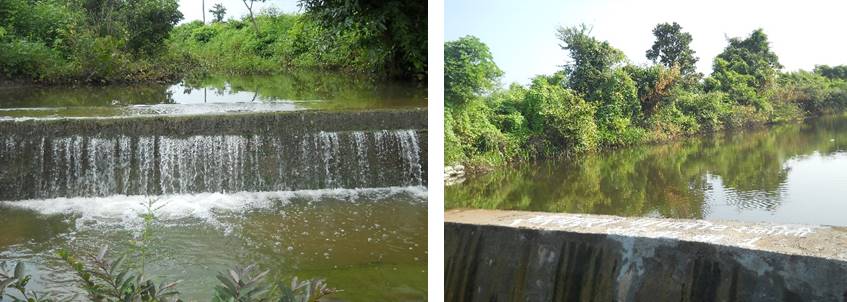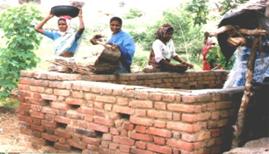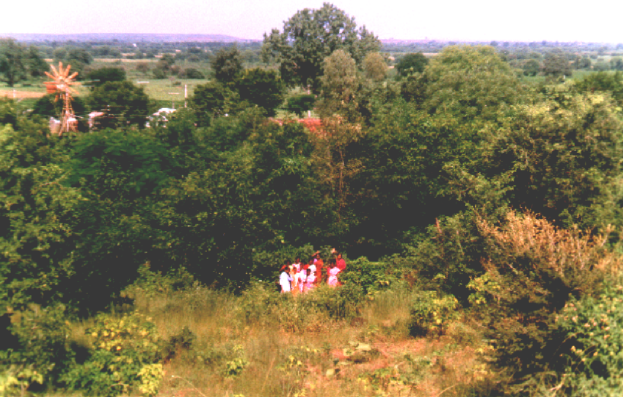There are five basic elements (Panch Tatva) that are required for the production of biomass. These basic items are Soil (Pruthvi); Water (Jal); Air (Vayu or Sameer); Energy (Agni) and Space (Aakash). If all these elements are optimally and appropriately and optimally used more productivity can be achieved.
Land Cover Management
The Land Cover Management project was sponsored by the Department of Science and Technology, Ministry of Science and Technology, Government of India, New Delhi.
The project envisaged producing a larger quantity of biomass per unit area with a minimum amount of water. Cover Management is done in three phases i.e. production of biomass, followed by processing biomass, preservation, and product diversification and marketing.
Soil and Water Management:
Management of soil and water is necessary, especially in an area where the land is denudated. Following are some techniques that play a crucial role in the management of soil and water:
- Ridge valley structures to ensure minimize soil erosion and rainwater runoff
- Large-scale plantation
- Construction of Continuous Contour Trenches (CCT)
- Making Loose Boulder Structures (LBS)
- Digging Farm Ponds
- Construction of Earthen bunds and Dams
- Cement Plugs (CP) in drainage lines

These watershed management measures ensure the availability of water around the year for agriculture, horticulture, social forestry, etc.
Plantation is done according to the favorable association between different species: Promoting multi-tier plantation systems having a favorable association between different plant species. The multitier system is resilient to natural perturbation and gives quality biomass from a variety of plant species.
Soil Nutrient Management
/ The detritus cycle prevalent in nature replenishes and enriches itself with humus, microbial, and fungal elements through natural processes as well as human interventions. One way of nutrient management is making different kinds of manure i.e. NADEP, Vermi, Liquid Fertilizer, Bio Fertilizers, Green Manure, Biodynamic preparations, etc.

Management of Solar Radiation
There are two kinds of plant species i.e. Halophytes are plants that need bright sunlight and their chloroplast needs radiation of a wavelength of 680 nm, and Sciophytes are plants that need dim or filtered sunlight and their chloroplast can work in a radiation wavelength of 700 nm.
Space Management
In a biodiversified plant community, every available space is utilized for growing organic material. The biomass is produced at four different levels:
- Top canopy of halophytes
- Middle canopy of facultative halophytes or facultative sciophytes
- Ground canopy of Sciophyte
- Underground tuberous plants
The productivity of such plant community is 2.5 times more than the monoculture farm.

Land before the project

Land after the project
Replication of Technology
CSV implemented the Land Cover Management project on an experimental plot in Karla village, Wardha where by using the above-mentioned technologies and diverse sources of water i.e. liquid water, humidity, fog, dew; capillary, and transpired water. 2.5 times more biomass was produced per unit area compared to the conventional system of monoculture.
These sets of technologies appropriate for Land Cover Management were transferred to more than 100 grassroots agencies working for farmers, artisans, women, and youths.
